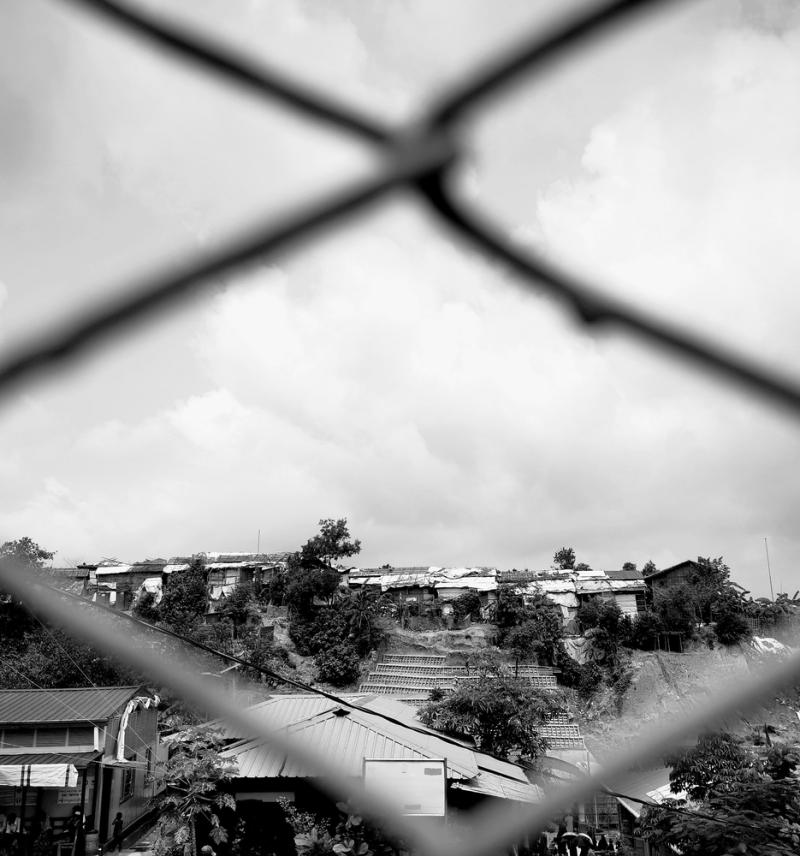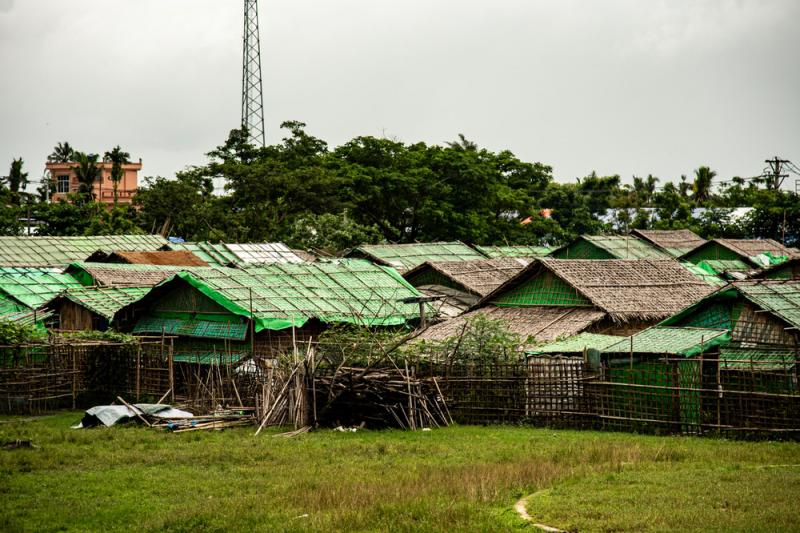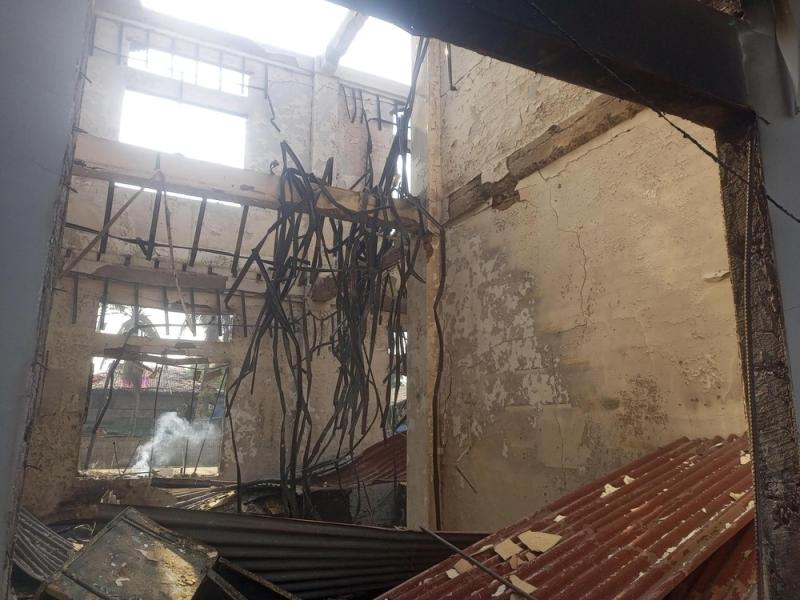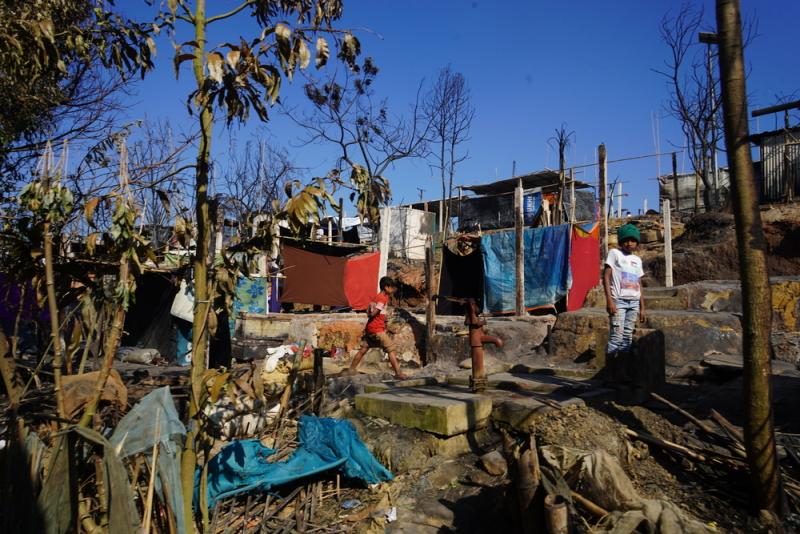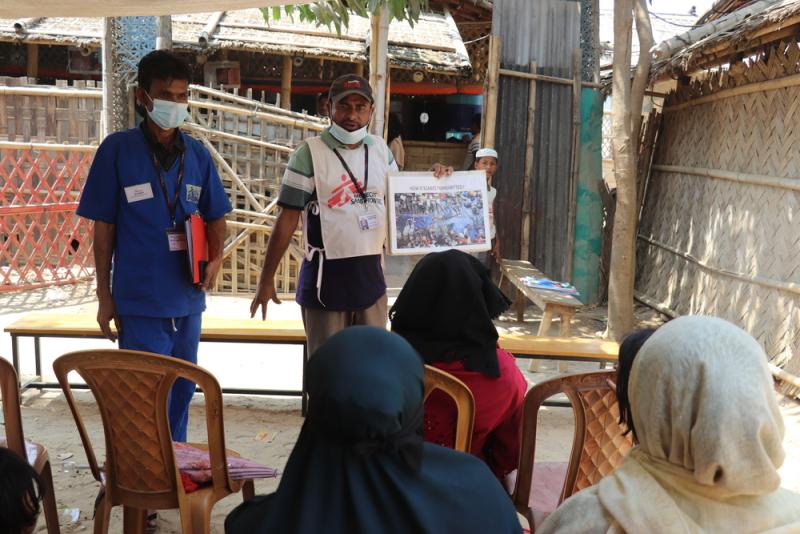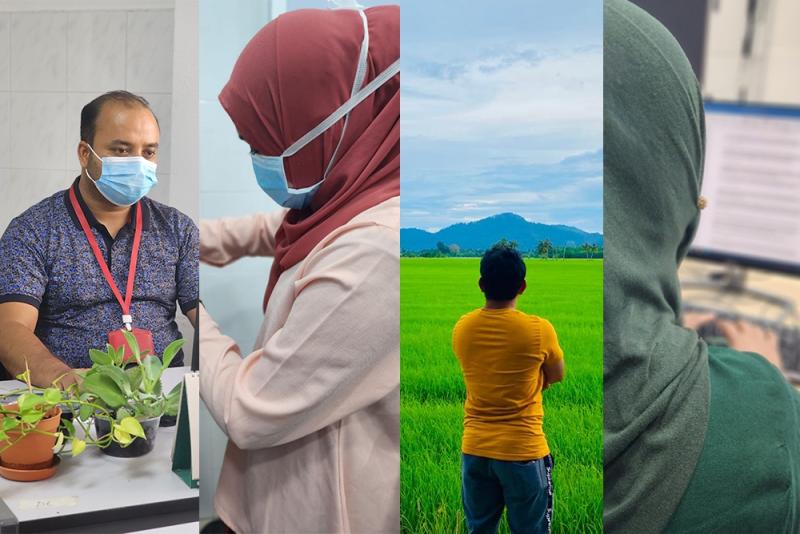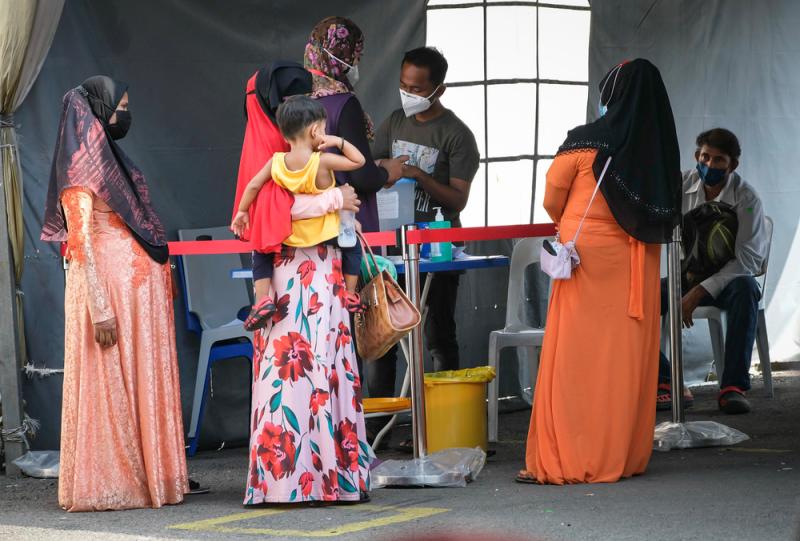
Rohingya refugee crisis
In Myanmar, Bangladesh, and Malaysia, we bear witness to an increasingly fragile and desperate present and an uncertain, bleak future for Rohingya communities.
Remember the Rohingya
Latest Update
Across Myanmar, 18.6 million people struggle to meet their basic needs, including access to medical care. Escalating violence has displaced millions, and healthcare is severely disrupted. Doctors Without Borders, after 30 years of providing aid in Myanmar, faces unprecedented challenges as conflict zones become inaccessible and medical facilities are targeted. The international community must act to ensure that humanitarian organizations like Doctors Without Borders can continue to deliver life-saving care to those most in need. The suffering in Myanmar cannot be ignored.
Related articles
Long-term solutions--durable solutions--are needed for the Rohingya. This population cannot continue to be ignored and forgotten, like pawns in a regional political stalemate.
In 1948, Myanmar gained independence from British rule, marking an era when the Rohingya people enjoyed equal rights in the newly formed nation. However, the tides turned dramatically in 1982 when, almost overnight, the Rohingya were stripped of their citizenship, rendering them stateless.
This abrupt shift set the stage for decades of persecution and abuse, denying the Rohingya basic rights and citizenship in Myanmar. The situation escalated in August 2017, with violent acts claiming the lives of at least 6,700 Rohingya, including children, and forcing over 600,000 to flee Myanmar. Those who remained faced the harsh reality of living in camps in Rakhine state, their homes violently destroyed.
For those who fled, seeking refuge meant undertaking perilous journeys over land and sea, landing in countries like Bangladesh, Malaysia, Cambodia, Thailand, and India.
Of the estimated 2 million Rohingya in Southeast Asia, more than half live in fenced camps in Cox's Bazar, Bangladesh—the world's largest displacement camp—while 600,000 endure restricted conditions in Rakhine state. Living in squalid conditions, they face limited opportunities for education, work, or advancement, with movement restrictions preventing them from leaving their villages or camps. Those in other parts of the world live on the fringes of society, with limited work opportunities and education, haunted by the fear of arrest.
Strikingly, only about one in five Rohingya remain in Myanmar, and the majority of Rohingya children are born outside their homeland, never knowing their roots. The denial of citizenship makes obtaining a passport virtually impossible, leaving them trapped without legal means to cross borders or obtain legal protections. Regrettably, this makes the Rohingya one of the world's largest stateless populations, excluded from legal pathways to a free life and forced to live on the fringes of society, impacting their health and well-being.
The fundamental lack of freedom leaves them unable to change their circumstances or heal from years of cumulative trauma. The Rohingya struggle, from equal rights to statelessness, remains a poignant and urgent issue on the global stage.
The Rohingya need a vision of a future they can trust. Constantly living in temporary conditions doesn't allow for a life of dignity.”Erik Engel, project coordinator
A timeline of the Rohingya crisis
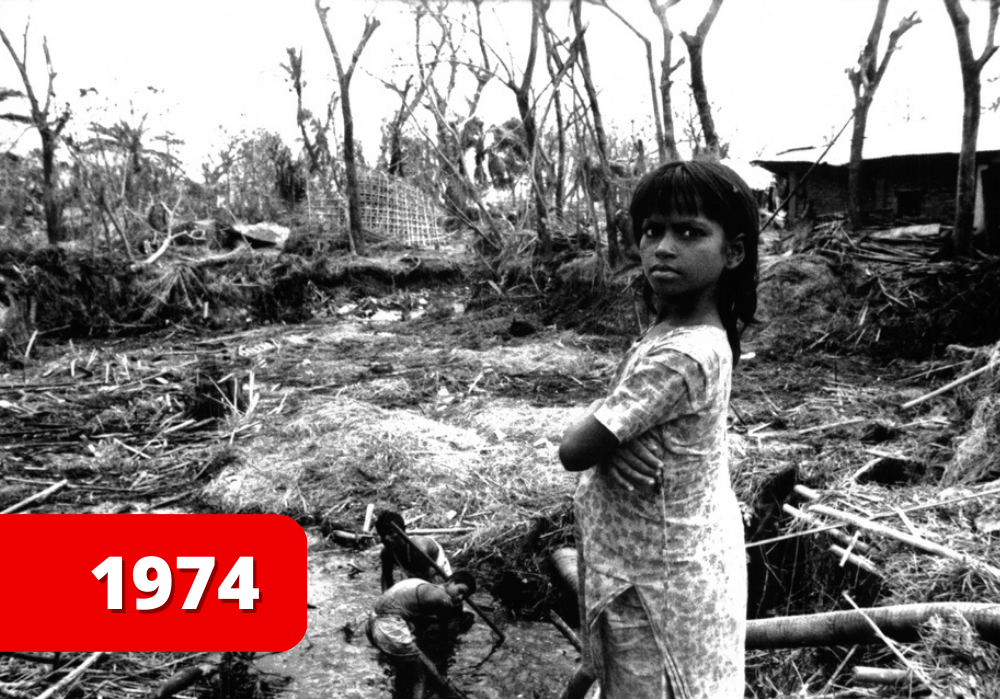
Burma’s military-run government passes the Emergency Immigration Act. Under the law, Bangladesh, China, and India are perceived as "foreigners," and given fewer rights. Authorities begin confiscating Rohingyas’ national registration cards. © Willy Legrendre/MSF
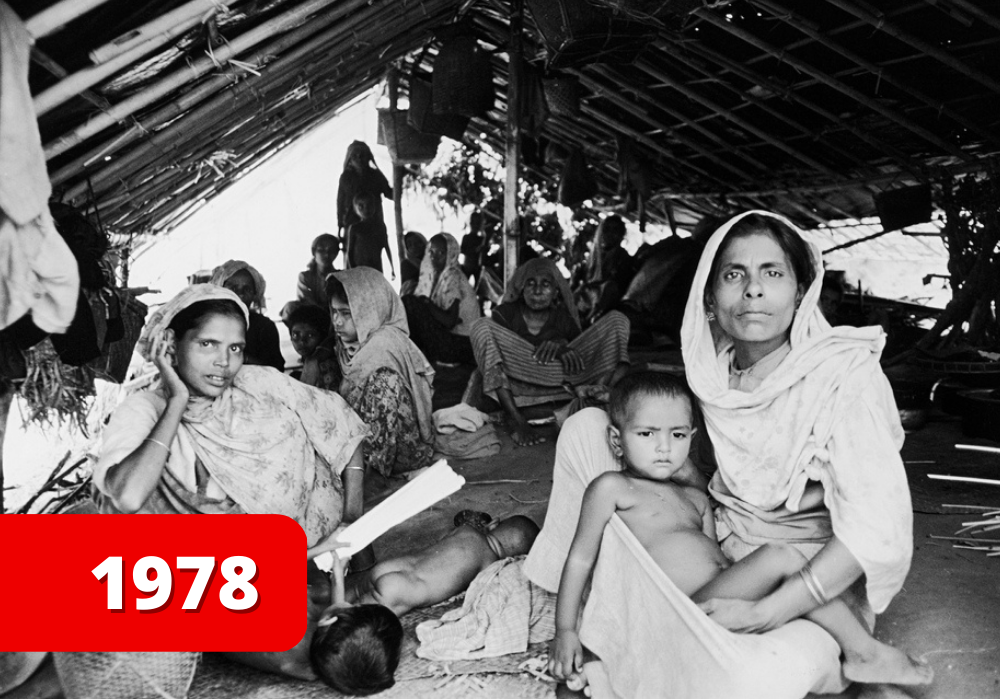
Burma launches Operation Dragon King (Naga Min) to register and verify the status of citizens and people viewed as “foreigners.” Soldiers assault and terrorize Rohingya.
This led to some 200,000 Rohingya fleeing across the border to Bangladesh, where refugee camps are set up. © Bangladesh/MSF

The Rohingya in Bangladesh are repatriated to Burma. Of those remaining in Bangladesh, some 10,000 people die - the majority children - after food rations are cut. © John Vink/MAPS
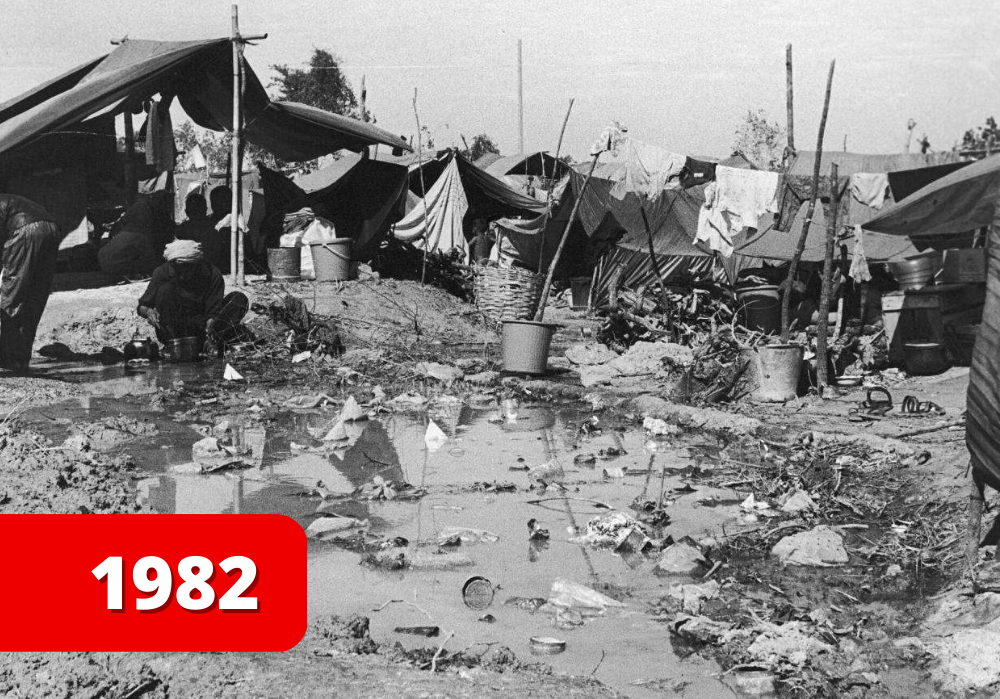
The Burmese parliament passes a new law, which bases citizenship on ethnicity. The law excludes the Rohingya and other minority communities. © Bangladesh/MSF
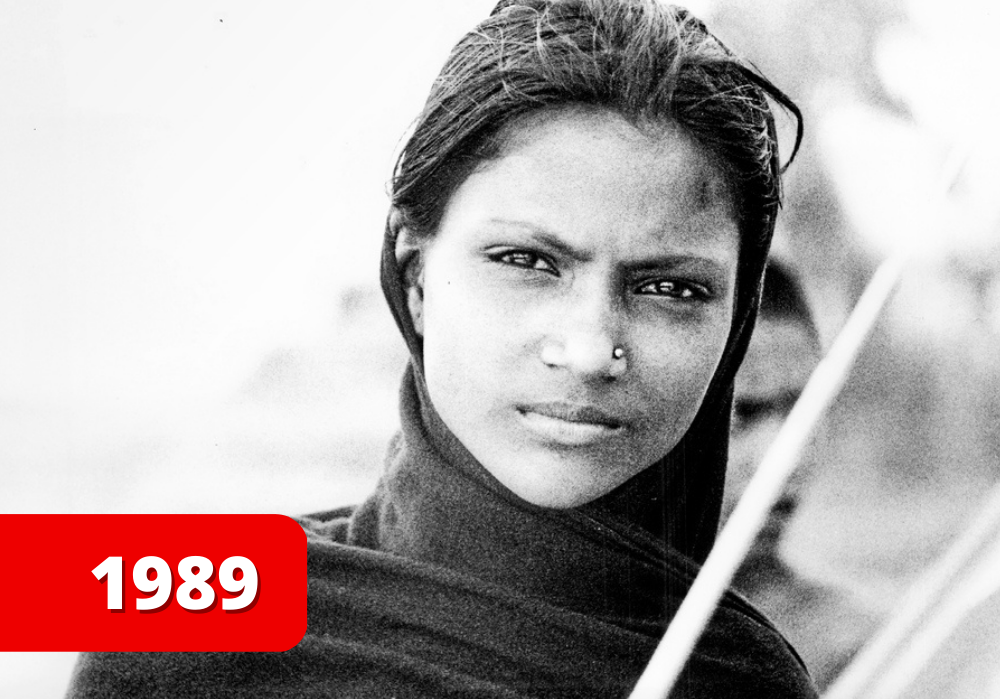
Following the suppression of a popular uprising, Burma is renamed Myanmar.
The government requires everyone to apply for new identification cards, called Citizenship Scrutiny Cards. Rohingya never receive the new cards.
The ruling State Law and Order Restoration Council increases its military presence in northern Rakhine state, and the Rohingya are reportedly subject to compulsory labour, forced relocation, rape, summary executions, and torture. Thousands of Rohingya flee to Bangladesh. © Willy Legrendre

Myanmar military launched Operation Pyi Thaya, or “Clean and Beautiful Nation,” during which soldiers commit widespread violence. Around 250,000 Rohingyas flee to Bangladesh.
Doctors Without Borders provided medical services in nine of the 20 refugee camps established for the Rohingya in southwestern Bangladesh. Food, water, and sanitation in the camps are inadequate. © John Vink/MAPS
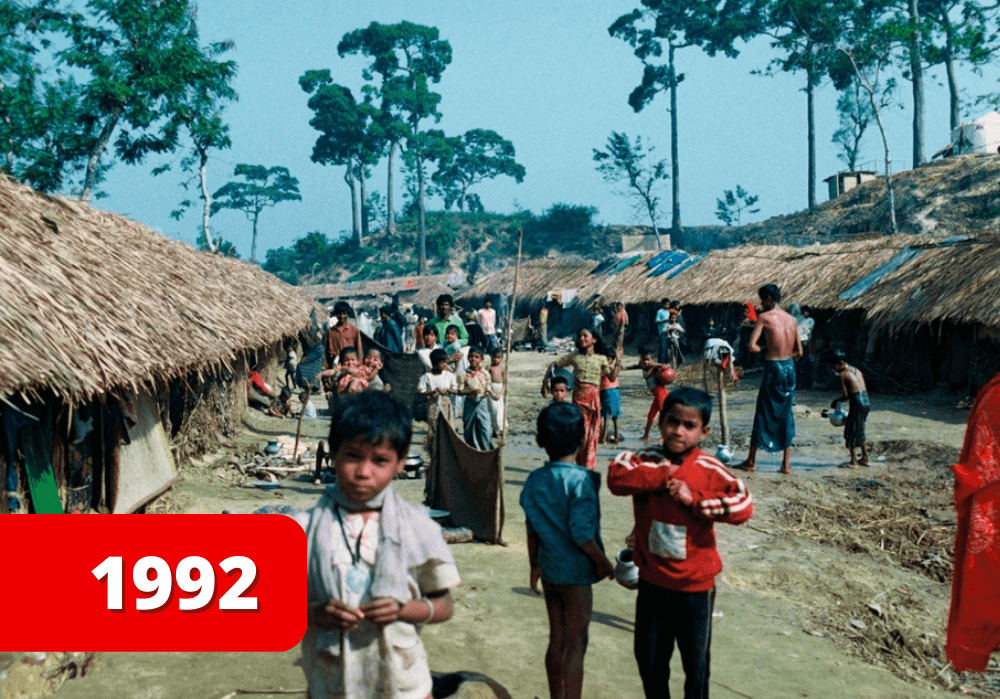
The governments of Bangladesh and Myanmar sign an agreement to repatriate refugees, and the camps are closed to new arrivals in the spring. By fall, forced repatriation begins, despite protests by the international community. The government creates a special border security force, called NaSaKa, to harass and persecute the Rohingya. Over the following years, some 150,000 Rohingya are sent back to Myanmar, and new refugees attempting the journey are denied entry to Bangladesh. © MSF
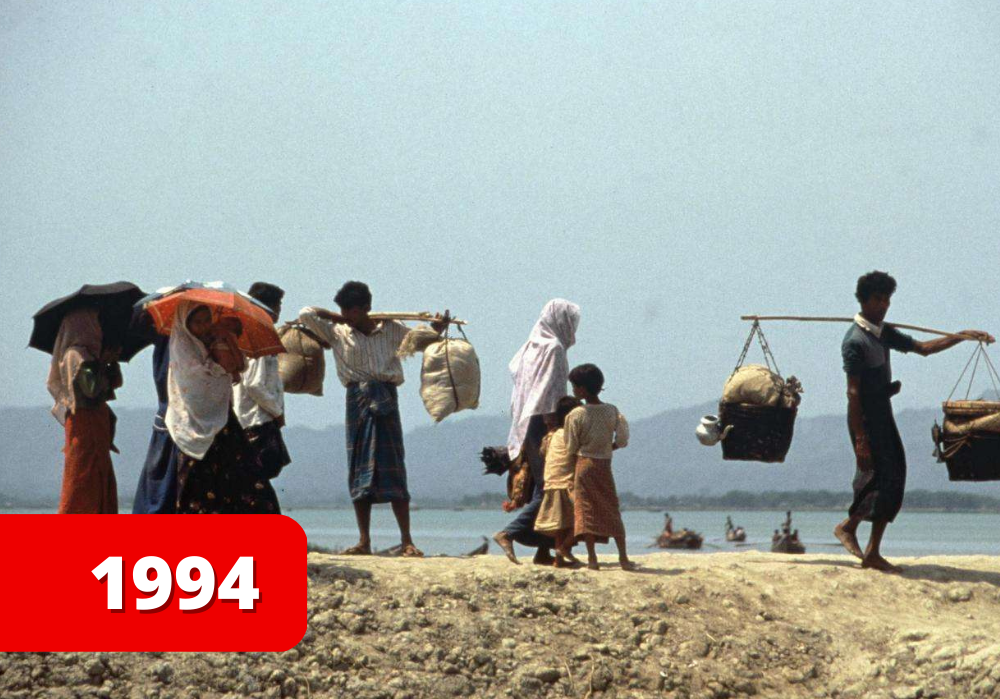
Myanmar begins denying birth certificates to Rohingya children. © Liba Taylor
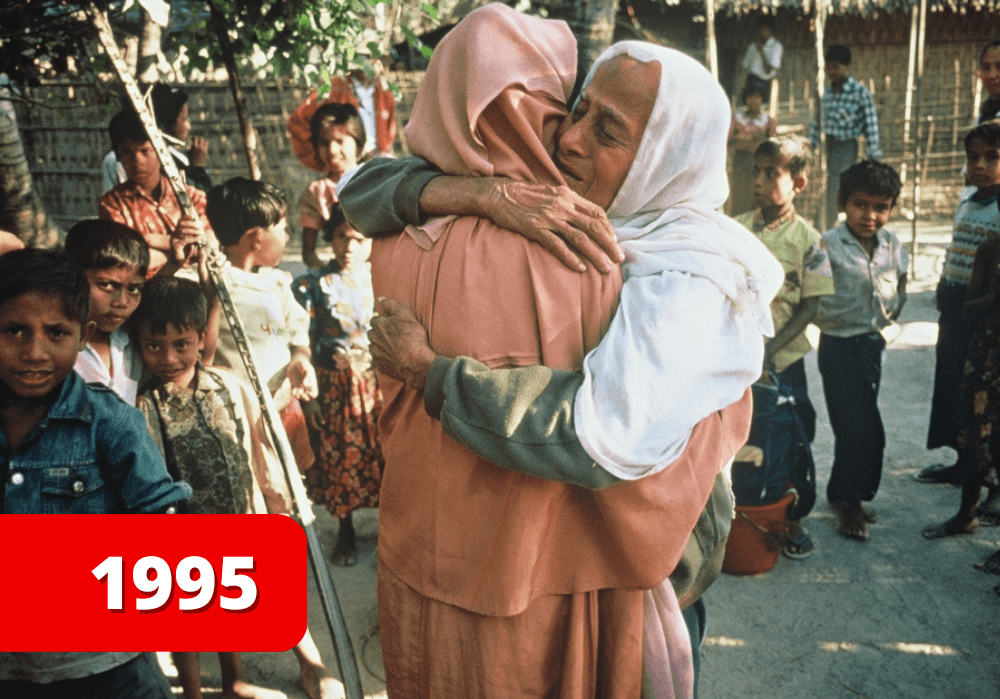
A temporary registration card, or "white card," is issued by the government to Rohingya. It is not a form of citizenship identification. © A. Hollmann
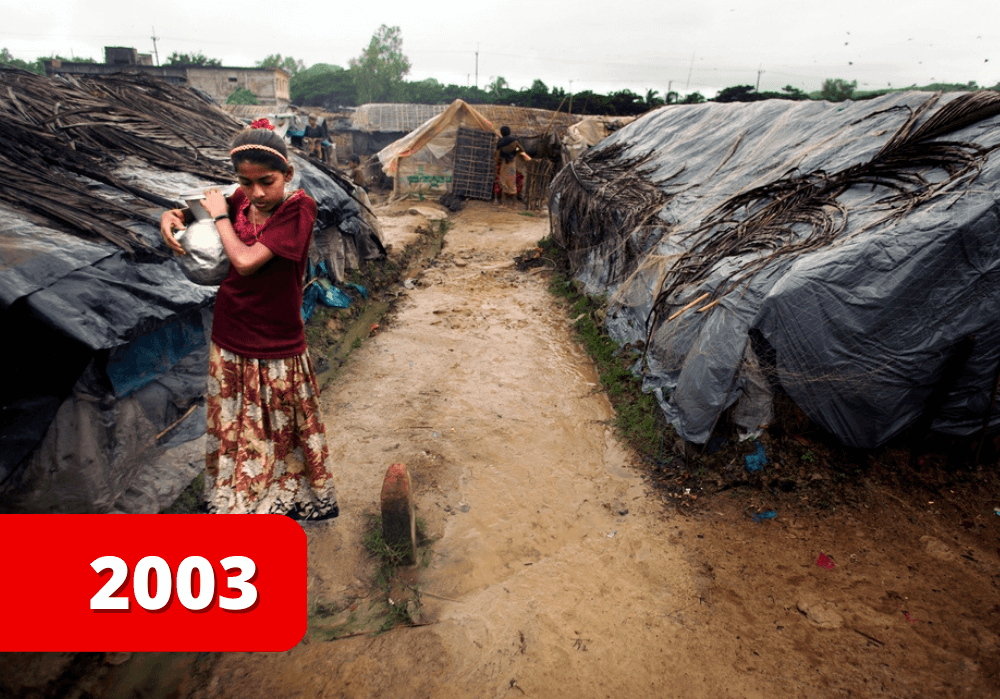
Of the 20 camps that were built in Bangladesh in the early '90s, only two remain. Living conditions remain dire—a study finds that 58 per cent of children and 53 per cent of adults are chronically malnourished. © Johannes Abeling
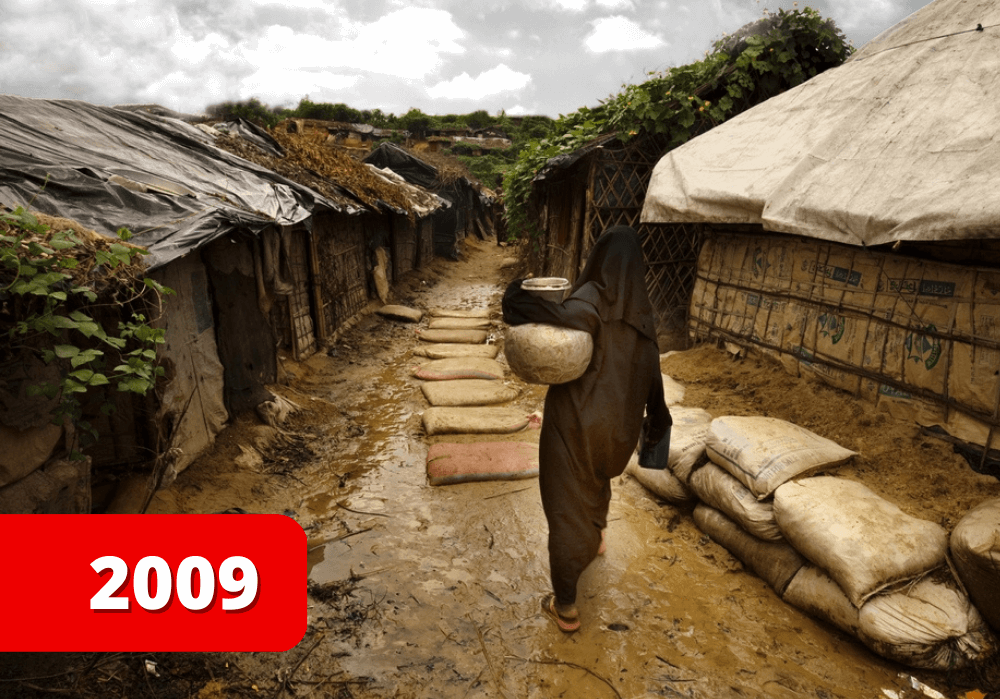
Tens of thousands of Rohingya fled Myanmar by boat as a result of clashes between the Buddhist and Muslim communities in Rakhine State. © Giulio Di Sturco
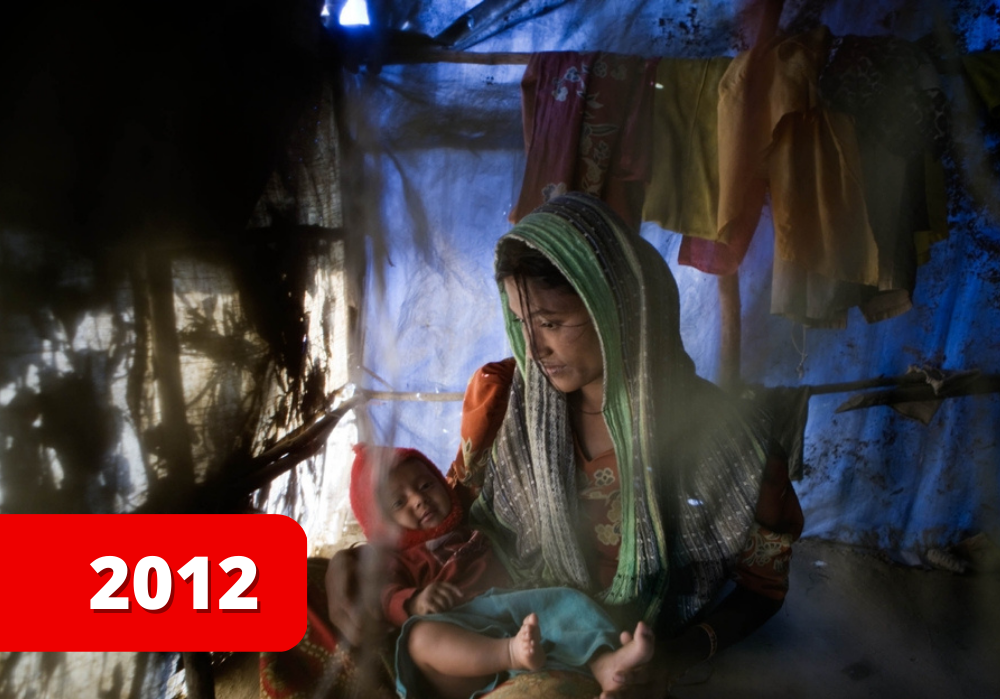
Doctors Without Borders runs a medical facility in Kutupalong makeshift camp in Bangladesh. Only a small percentage of Rohingya seeking refuge in Bangladesh are officially recognised as refugees. Unrecognised Rohingya refugees are vulnerable to harassment and exploitation. © Juan Carlos Tomasi
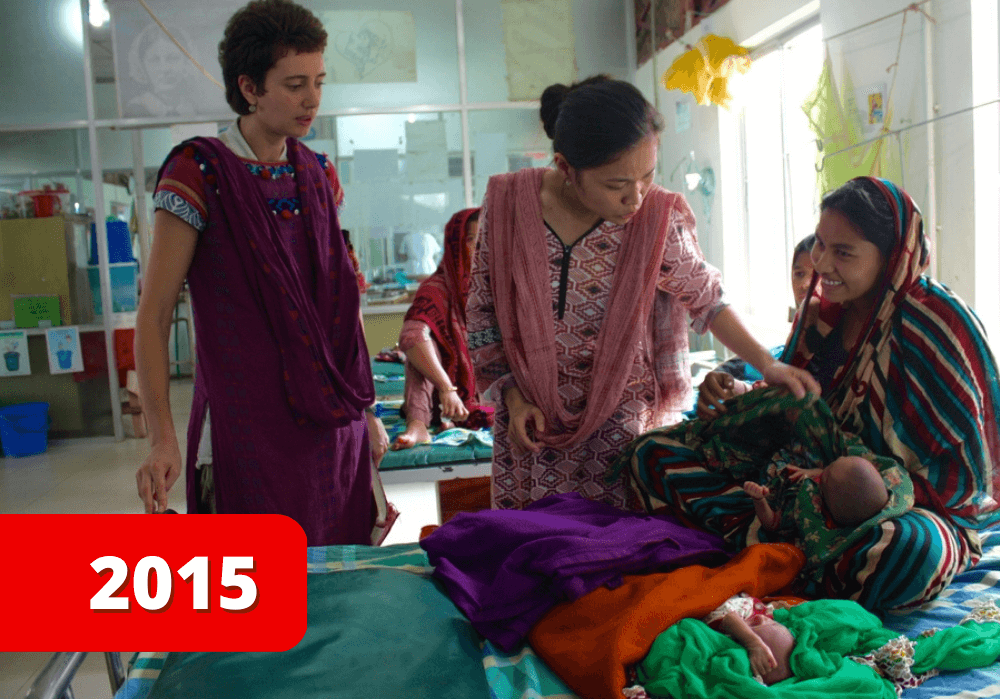
Rohingya white cards, their only form of identification, are invalidated by the government. Instead, the Rohingya must obtain national verification cards, which incorrectly identify them as immigrants from Bangladesh. Most Rohingya reject the new cards. © Alva Simpson White
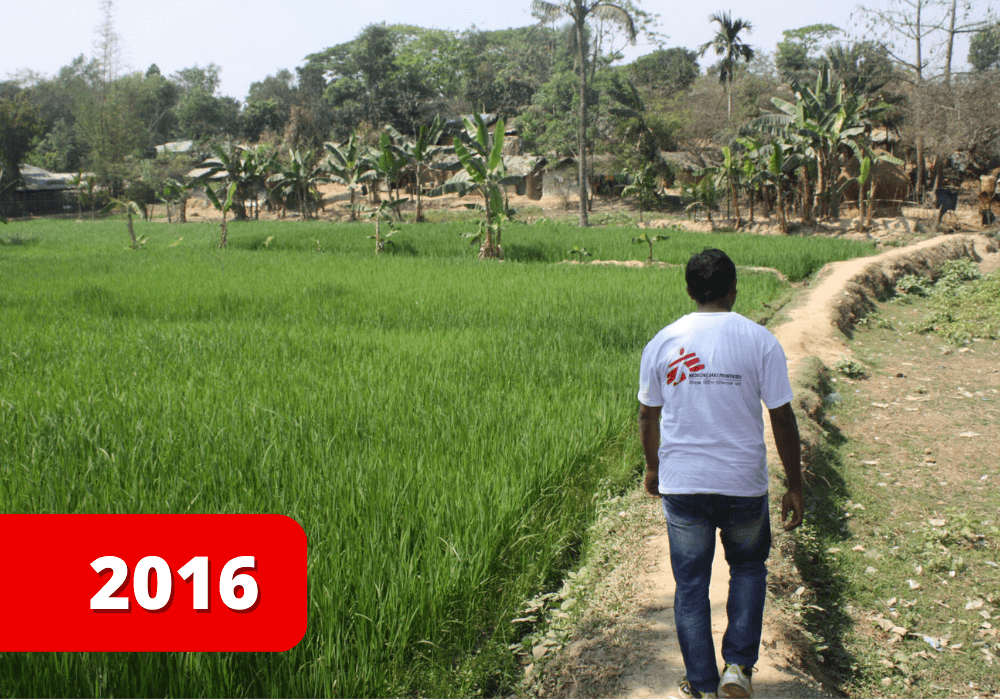
On October 9 Rohingya militant attacks on border police in Myanmar’s Rakhine state triggered reprisals against the Rohingya community, bringing a new wave of refugees across the border and an influx of patients to the Doctors Without Borders clinic in Kutupalong makeshift camp clinic, which provides comprehensive medical care to Rohingya refugees and the local community in Bangladesh. © Alva Simpson White
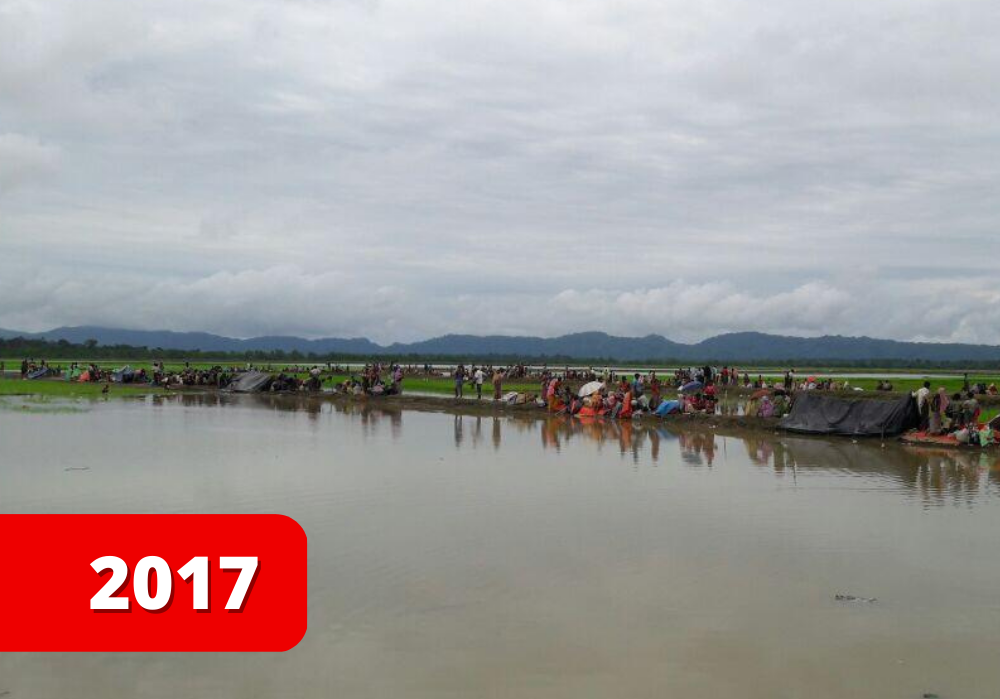
Following Rohingya militia attacks on several police and army posts in Myanmar on August 25, state security forces launch a campaign of horrific violence and terror targeting the Rohingya community. More than 700,000 Rohingya are driven out of Myanmar within weeks. The cycle of mass displacement begins again, this time on an unprecedented scale. Doctors Without Borders documents more than 6,700 violent deaths among the Rohingya.
Medical facilities in Bangladesh, including those run by Doctors Without Borders, are quickly overwhelmed. In September, Doctors Without Borders called for an immediate scale-up of humanitarian aid to the Rohingya in Bangladesh to avoid a public health disaster. Doctors Without Borders also urges the government of Myanmar to allow independent humanitarian organisations unfettered access to northern Rakhine state. © Madeleine Kingston/MSF
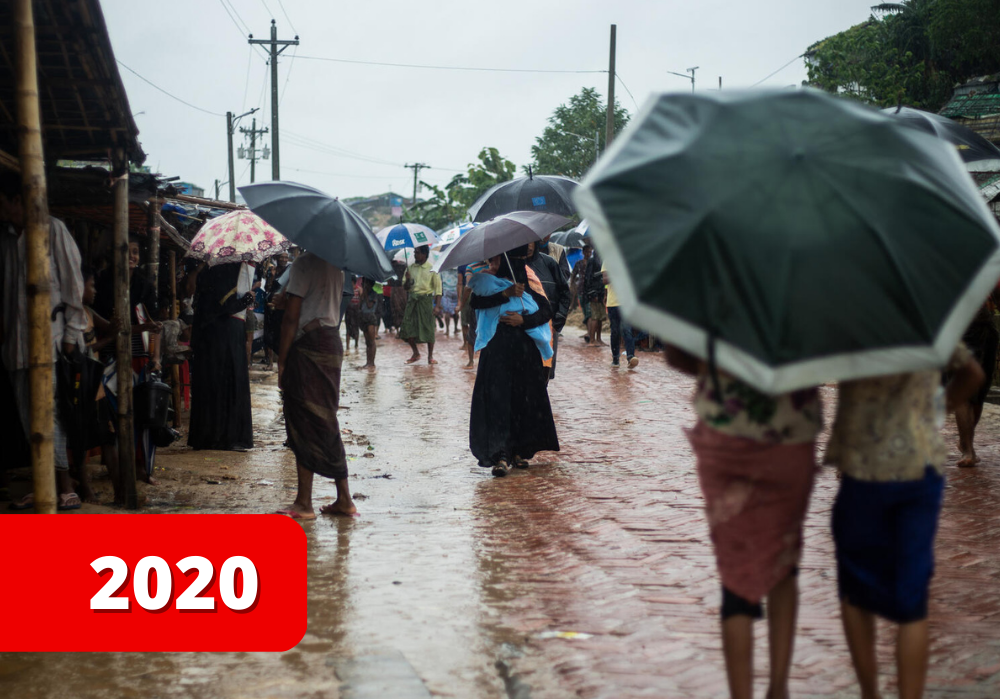
Starting in December, the Bangladeshi government begins relocating some refugees to Bhasan Char, a silt island in the Bay of Bengal that had remained uninhabited until now—due in part to its remote location and unstable environment. © Hasnat Sohan/MSF

Bangladeshi authorities impose strict lockdown measures during the COVID-19 pandemic that further restrict freedom of movement and work opportunities for Rohingya people. Amid increasingly desperate conditions, armed groups gain strength through violence and extortion. As living conditions continue to deteriorate, fires break out in the camp, including one in the Balukhali area that injures 11 people and destroys a Doctors Without Borders clinic in March. The camp is then hit with heavy rains and floods starting in July.
Many people must make impossible choices about their future. Some make the dangerous journey on trafficking boats across the Bay of Bengal to join the more than 100,000 Rohingya living in Malaysia. These boats are often caught by Malaysian authorities, but when they return to Bangladesh, they are blocked by Bangladeshi authorities and stranded at sea for weeks—sometimes months.
Miserable conditions in the camp and bleak prospects for the future fuel a mental health crisis among the Rohingya living here. © Pau Miranda
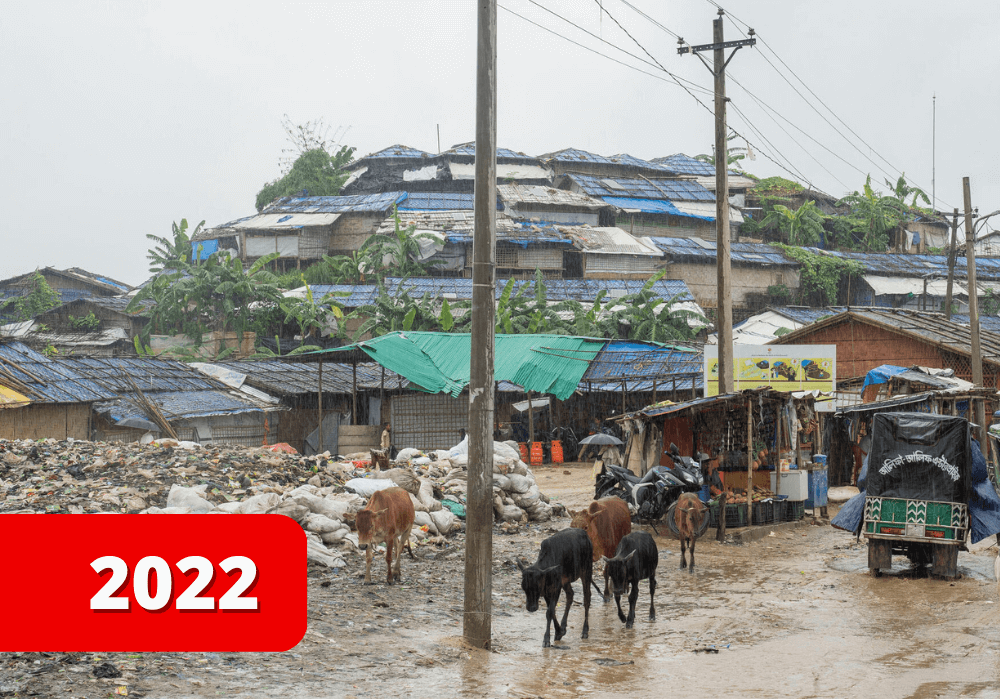
Five years after the largest campaign of targeted violence ever committed against the Rohingya in Myanmar, nearly one million people are living in the same bamboo and plastic shelters in Cox's Bazar, dependent on aid, with no better solutions in sight. © Saikat Mojumder/MSF
- Who are the Rohingya?
The Rohingya are individuals from Rakhine state in Myanmar, situated along the northern border with Bangladesh. Primarily Muslims, they have coexisted with the predominantly Buddhist population in Myanmar for centuries. However, in 1982, the Myanmar authorities contested their historical presence and revoked their citizenship, branding them as illegal immigrants from Bangladesh.
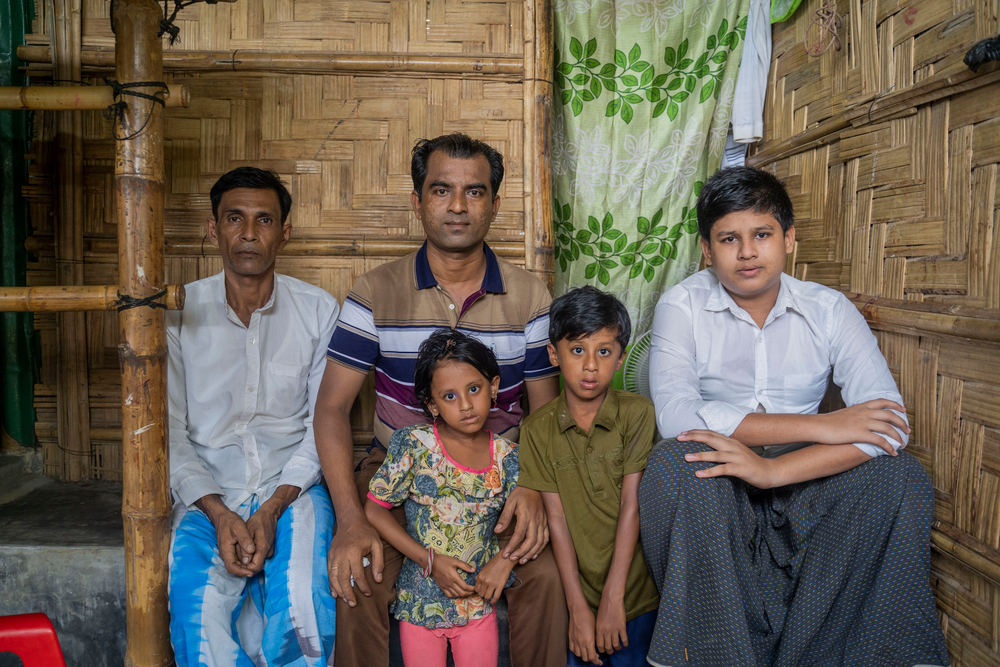
“I would like to address young people like me around the world. Please use the opportunity you have and learn as much as you can," said Anwar Arafat, 15 years old who lives in Jamtoli Refugee Camp Bangladesh. 2022 © Saikat Mojumder/MSF
Targeted violence
The denial of their citizenship left the Rohingya exposed to decades of discrimination and violence. However, the situation escalated dramatically in August 2017 when the Myanmar military launched a brutal crackdown in response to attacks by Rohingya insurgents. Reports of mass killings, rape, and the burning of villages emerged, compelling the Rohingya to flee for their lives.
The gravity of the crisis is underscored by the tragic loss of life. According to surveys conducted by Doctors Without Borders between August 25 and September 24, 2017, at least 6,700 Rohingya lost their lives during this period. In more conservative estimates, at least 6,500 individuals were killed, including 730 children below the age of five. These chilling statistics confirm the reports by international news organizations of targeted violence—a reality that the Myanmar government continues to deny.
The scale of the crisis is staggering. Within a few months, an estimated 700,000 Rohingya refugees crossed into Bangladesh, joining the hundreds of thousands already living in overcrowded camps. The sudden influx placed an immense strain on humanitarian resources and infrastructure, exacerbating the already dire conditions in the camps.
The Rohingya crisis drew widespread condemnation from the international community. Human rights organizations, governments, and global leaders called for an immediate end to the violence and the protection of the displaced Rohingya. The United Nations labeled the Rohingya as one of the most persecuted minorities in the world.
- Why are the Rohingya stateless?
The Rohingya are considered foreigners in Myanmar, a status attributed to the introduction of the 1982 Citizenship Law. This legislation systematically excludes them from recognition as one of the "national race," rendering them stateless within their own homeland.
Despite the Myanmar government's purported effort to offer citizenship through a "verification" exercise, the Rohingya people are hesitant to accept the National Verification Card (NVC1).
Even if they possess this card, their ability to move freely within the Rakhine state or the country is severely restricted. They face substantial barriers, including checkpoints, bureaucratic obstacles, and discriminatory practices, which not only limit their freedom of movement but also impede their access to essential services. This situation underscores the multifaceted challenges faced by the Rohingya, as discriminatory policies and denial of their identity contribute to their statelessness and ongoing marginalisation.

We are not stateless. We are from Myanmar. Our ancestors are from Myanmar.” – Abu Ahmad, 52 years old, fled to Bangladesh. Bangladesh, 2018 ©Ikram N'gadi/MSF
- What is the current situation of the Rohingya?
In Bangladesh
"Spending our lives in the camp was difficult; the area was small, and there was no room for the children to play." – Abu Siddik, Cox's Bazar, Bangladesh
Almost seven years have passed since the massive influx of more than 770,000 Rohingya refugees into Cox's Bazar in 2017, adding to the existing 250,000 Rohingya from the previous wave of violence. The current population in the zone about 25 kilometers south of Cox's Bazar city is now approaching a million people.
Initially, the Bangladeshi government welcomed the Rohingya, shouldering the burden of providing shelter and food aid. Working with the government and other stakeholders, various NGOs in Cox's Bazar camps address basic needs such as food, cooking gas, air, sanitation, basic education (up to primary level) and primary health care. However, these efforts only scratch the surface of the needs of nearly one million refugees.
Bangladeshi authorities and host communities are expressing growing frustration with what they see as insufficient international action to resolve the crisis. They advocated immediate repatriation and noted that the response in Bangladesh should remain temporary. This is evident in the temporary nature of refugee shelters and NGO facilities, mandated to use non-permanent materials.
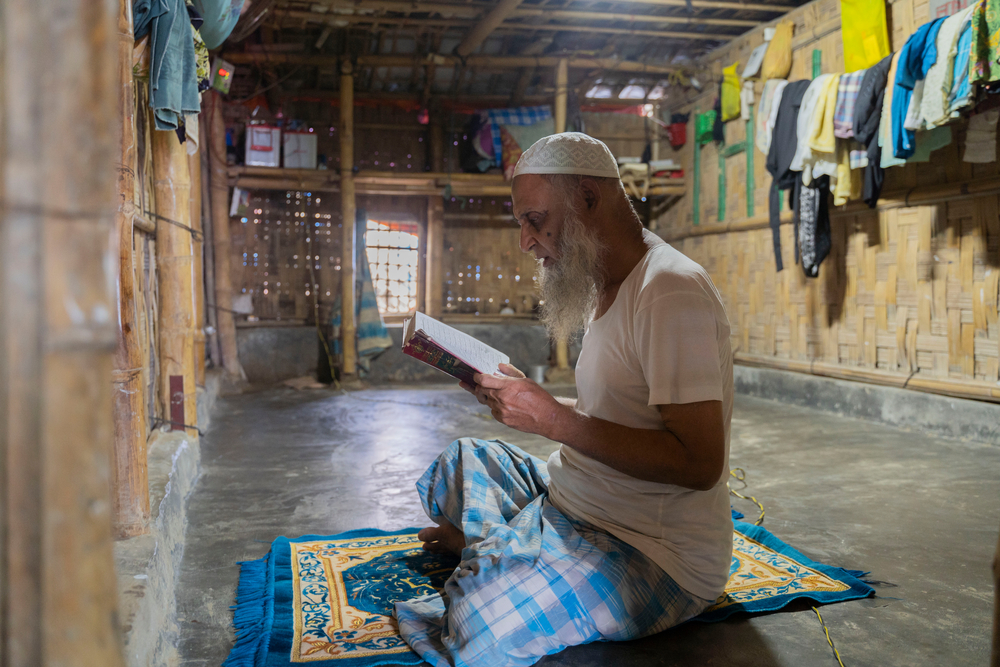
“I am old now and will die soon. I wonder if I will see my homeland before I die. My hope is to breathe my last in Myanmar.” Mohamed Hussein, a 65-year-old Rohingya shared his wish with Doctors Without Borders. Bangladesh, 2022. © Saikat Mojumder/MSF
Exacerbating the situation, the humanitarian focus on the Rohingya is due to crises elsewhere. UNOCHA reported a decrease in funding for the Rohingya Joint Response Plan from $629 million in 2020 to $602 million in 2021, with current funding at only 46 percent as of December 2023.
Although Doctors Without Borders remains independently funded, the allocation of global resources is based on need, reducing the impact of Doctors Without Borders' ability to provide healthcare. Overwhelmed facilities saw a surge in patients seeking basic healthcare, exacerbated by the closure or dysfunction of nearby healthcare posts. Demand to treat chronic diseases such as diabetes and high blood pressure has increased, straining Doctors Without Borders' capacity.
Concerns about water and sanitation persist, with little improvement in air quality and insufficient quantity. Access to proper sanitation facilities remains a challenge, contributing to airborne diseases. The Doctors Without Borders 2022 survey highlights issues such as signs abound, underscoring ongoing struggles.
Accessing healthcare is difficult, with patients facing long and challenging journeys in difficult terrain, even in harsh conditions. Soap rations have decreased, affecting personal hygiene resources. Scabies cases are on the rise, with Doctors Without Borders treating more than 70,000 patients in the first half of 2023, prompting a massive WHO administration, though not complete without robust water and sanitation interventions.
Non-communicable diseases (NCDs) pose a significant challenge, with Doctors Without Borders experiencing a steady increase in patient care. Referral to secondary care is common due to limited beds in closer hospitals. Mental health issues are exacerbated by poor living conditions, lack of livelihood opportunities and violence, leading to a spike in anxiety, depression and suicide attempts since 2021.
In addition, the camp faces an increase in dengue and malaria infections, which require WASH funding for larval breeding and management. When the situation worsens, individuals often use paid smugglers to escape to Malaysia, Indonesia or Thailand.
In Malaysia
For more than 30 years, Rohingya refugees have made the perilous journey across the Andaman Sea to reach Malaysia, seeking safety and hope for the future. However, life for refugees in Malaysia remains challenging, prompted by a constant struggle for dignity and acceptance. Malaysia, not pending the 1951 UN Refugee Convention and its protocols, lacks legal recognition and protection for refugees and asylum seekers, effectively criminalizing their presence and giving them access to public services, including health care.
The United Nations High Commissioner for Refugees (UNHCR) provides limited protection to registered refugees and asylum seekers through issued cards. Despite this, their lack of legal status exposes them to constant risk of arrest, detention and barriers to essential services such as health care, education and legal employment.
Many refugees, including the Rohingya, find themselves detained in immigration centers across the country, with UNHCR denied access since August 2019, preventing the determination of refugee status and the release of detainees. As of July 2022, 17,703 foreigners were reportedly detained in 21 immigration detention centers across the country. In 2023, Malaysia's Ministry of Home Affairs revealed that its detention centers housed 1,382 children, and there were plans to move them to new child-friendly facilities.
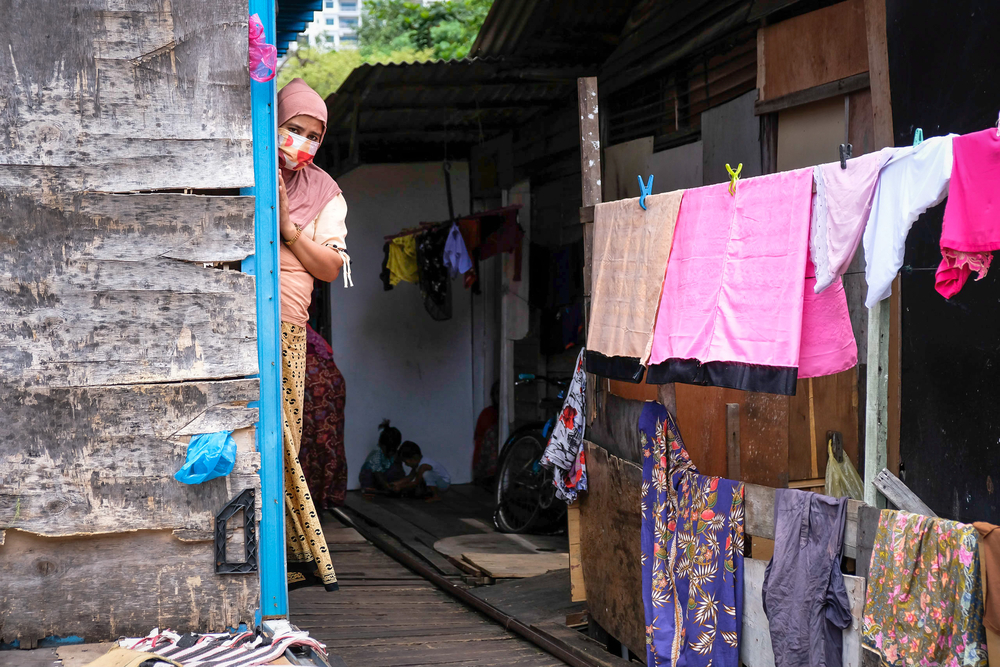
Since the emergence of the COVID-19 pandemic in 2020, Doctors Without Borders has documented a surge in xenophobic sentiments against Rohingya refugees in Malaysia, coinciding with changes in government. The government's uncompromising approach involves preventing boats from reaching shores, tightening border controls, and intensifying immigration raids that specifically target areas populated by refugees and migrants.
In May 2022, there was a significant change in the demographics of new boat arrivals, with a higher proportion of men than women. Among these arrivals, a large number consist of young Rohingya girls, who, in pursuit of a safer life, are often involved in arranged marriages and become victims of trafficking. Unfortunately, these newcomers face legal charges, resulting in imprisonment or detention in immigration custody. Despite Doctors Without Borders' efforts to extend medical and mental health support to these individuals, success in reaching them has been elusive.
The harrowing journey experienced by Rohingya refugees contributes to incidents of sexual and gender-based violence (SGBV), with 17 percent of clinic survivors reporting assaults during their journey. Seeking care for mental health often revolved around migration-related factors, with 64 percent showing symptoms of anxiety and 18 percent experiencing mood-related problems.
Refugee women, especially teenagers, face additional challenges, including long waits for UNHCR registration, which lead to the threat of arrest and deportation. Unregistered asylum seekers face exorbitant charges at health care facilities, making health care financially out of reach. The vulnerability of refugees is exacerbated by online and on-site hate speech, directly targeting them. The plight of refugees in Malaysia urgently needs international attention and concerted efforts to shape lasting solutions.
In Myanmar
About 600,000 Rohingya individuals still live in Rakhine state, with about 140,000 in displacement sites, including camps where their freedom of movement is severely restricted. Even those in village settings face bureaucratic hurdles and high costs for documentation, limiting access to basic services.
For the Rohingya in Rakhine state, the military coup did not bring a significant improvement to their situation. Before the coup, their situation was dire, and they continued to endure hardship. Myanmar's 1982 Nationality Law excluded them from being recognized among the "135 official indigenous peoples," rendering them stateless. This lack of full citizenship results in numerous human rights violations, including restricted movement and consequently limited access to health care, education and livelihoods.
Conditions in the camp remain overcrowded and unsanitary, with little indication that individuals will be allowed to return to their villages. The result of displacement, coupled with the possibility of their residence being occupied by another ethnic group, adds to the challenge. The situation in Myanmar is far from conducive for the safe and voluntary repatriation of Rohingya from Bangladesh.
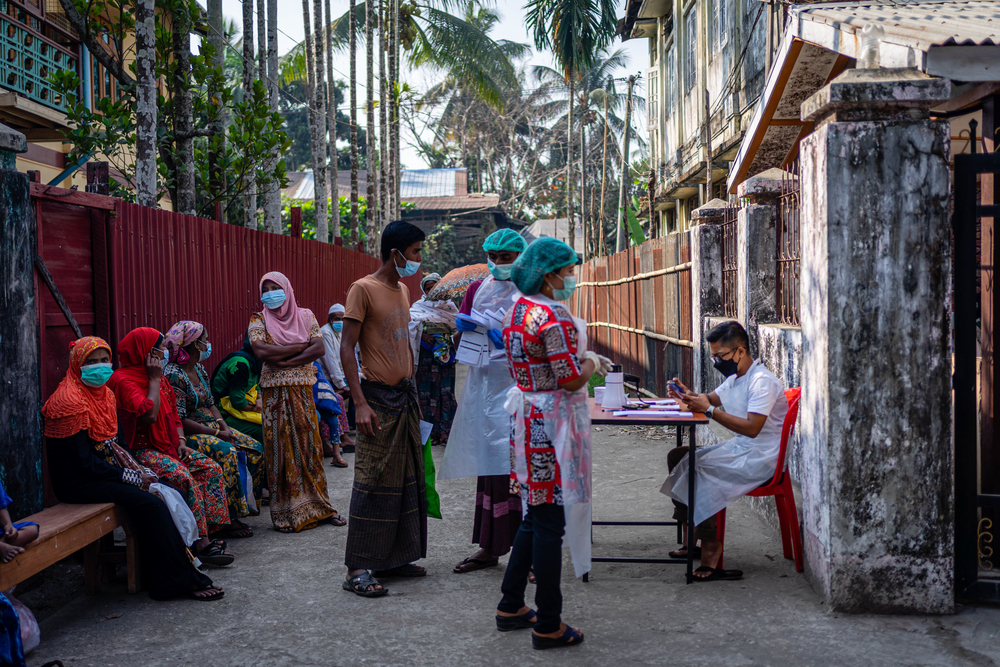
Families are separated not only by those who fled to Bangladesh but also by Rohingya undertaking perilous journeys, particularly to Malaysia, in search of better opportunities. These circumstances significantly impact the mental health of those remaining in Myanmar.
The military seizing power amid the pandemic has triggered economic turmoil, with the kyat plummeting against the dollar, leading to escalating import prices. This has resulted in increased costs for fuel and food, particularly affecting Rakhine state, heavily reliant on goods transported from other parts of the country.
Growing tensions in Rakhine state between the Arakan Army and the Myanmar military add to the challenges. Although the Rohingya are not directly involved in this conflict, heightened insecurity may expose them to violence, affecting Doctors Without Borders' movements and community access.
Escalating armed conflict in Rakhine has led to displacement, restricted access to humanitarian assistance, and the closure or reduction of health facilities for all communities in the region. Cyclone Mocha highlighted vulnerabilities in Rohingya and Rakhine displaced persons camps, particularly when emergency response activities were hindered by limited access and travel authorization. This left communities to cope independently in the critical days following the disaster, impeding emergency response efforts.
Doctors Without Borders faces blockages at checkpoints, resulting in prolonged delays. Navy checkpoints on the route to clinics in Pauktaw township, holding them for an average of two hours, lead to reduced clinic opening times and a 30% decline in medical consultations within a week. Approximately 200 patients per week miss out on healthcare due to limited freedom of movement, impacting healthcare, education, employment, and businesses.
The multifaceted challenges demand urgent attention and concerted efforts to alleviate the plight of those affected.
